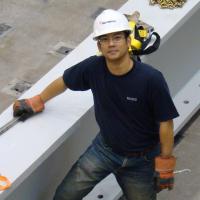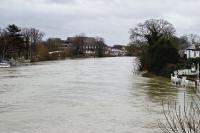-
Teaching the next generation of cybersecurity professionals
In 2003, I founded Cyber Security Awareness Week (CSAW) with a group of students, with the simple goal of attracting more engineering students to our cybersecurity lab at NYU. Today, with as many as 20,000 students from around the globe participating, CSAW is the largest student-run cybersecurity event in the world. The ability quickly to adapt as new threats are perceived is a top priority for security personnel. That’s a key element of all CSAW competitions – the idea that successful cybersecurity is not limited to mastering what’s known. Rather, students and professionals alike must constantly push their abilities to intercept future threats in an ever-evolving field. The competitors in the CSAW-sponsored games and competitions, which take place in educational settings in the United States and around the world, will — not long from now — be the protectors of our most sensitive personal and national data. We need them to be prepared.
-
-
X-ray vision: Bomb technicians strengthen their hand with Sandia’s XTK software
X-Ray Toolkit (XTK), an image-processing and analysis software developed at Sandia National Laboratories, has been adopted by the military and emergency response communities in the United States and around he world. “XTK is the standard in the field not only nationally, but internationally. It made the average bomb tech a better bomb tech,” said Craig Greene, a special agent and bomb technician at the Albuquerque, New Mexico FBI. “In the past twenty years, the bomb technician community has progressed from the Stone Age to the twenty-first century in terms of equipment and procedures, and XTK is a major part of that progression.”
-
-
DHS takes delivery of RadSeeker which identifies threat materials in shielded, masked, or concealed situations
The first regular shipments of the Smiths Detection RadSeeker featuring Symetrica’s Discovery Technology Sub-System will begin this fall as the first part of a contract with the Department of Homeland Security (DHS). Symetrica’s Discovery Technology at the heart of RadSeeker identifies threat materials in shielded, masked, or concealed situations.
-
-
UN’s Sustainable Development Goals: Wicked trade-offs between environmental, food security goals
As world leaders gather in New York for the UN General Assembly, one year after the formal adoption of the UN’s Sustainable Development Goals (SDGs), a new study finds that policies focused solely on the environment tend to increase food prices. However, the study goes on to identify sustainable consumption and production practices as key to achieving both environmental and food security targets simultaneously.
-
-
Extraordinary global heat continues
Although the seasonal temperature cycle typically peaks in July, August 2016 wound up tied with July 2016 for the warmest month ever recorded. August 2016’s temperature was 0.16 degrees Celsius warmer than the previous warmest August (2014). The month also was 0.98 degrees Celsius warmer than the mean August temperature from 1951-1980, according to NASA. The increasing warming is driven by carbon dioxide concentrations – which have passed the symbolic milestone of 400 parts per million in the atmosphere so far this year. Levels vary according to the season, but the underlying trend is upward. According to NOAA, the global monthly mean CO2 in July 2016 was 401.72 parts per million, up from 393.13 parts per million in July 2015.
-
-
Sizable increase in U.S. R&D spending
U.S. research and development (R&D) performance rose to $477.7 billion in 2014 — an increase of $21.1 billion over the previous year — and is estimated to hit $499.3 billion in 2015. adjusted for inflation, growth in U.S. total R&D performance averaged 1.2 percent annually between 2008 and 2014, matching the average pace of U.S. gross domestic product (GDP).
-
-
Climate change poses “strategically significant risk” to U.S. national security
Twenty-five national security and military leaders the other day released a statement declaring that: “the effects of climate change present a strategically-significant risk to U.S. national security,” and urging a “comprehensive policy” in response. The authors of the statement say that stresses resulting from climate change can increase the likelihood of intra or international conflict, state failure, mass migration, and the creation of additional ungoverned spaces, across a range of strategically-significant regions. They add that the impacts of climate change will place significant strains on international financial stability through contributing to supply line disruptions for major global industries in the manufacturing, energy, agriculture, and water sectors, disrupting the viability of the insurance industry, and generally increasing the political and financial risks of doing business in an increasingly unstable global environment.
-
-
Do teachers’ climate change beliefs influence students? The answer is yes and no
A study of middle school science classes explored whether teachers’ beliefs about climate change influenced students’ perceptions. “The answer is yes and no,” says the study’s author. “While students generally mirror a teacher’s belief that global warming is happening, when it comes to the cause of climate change, students reason for themselves and reach different conclusions than their teachers do.”
-
-
Virginia Tech’s Thinkabit Lab: Hands-on STEM learning for students, training for teachers
Virginia Tech and Qualcomm Inc. begin a multiyear collaboration this fall with the launch of the Qualcomm Thinkabit Lab at Virginia Tech’s Northern Virginia Center in Falls Church. The Thinkabit Lab offers both teachers and students an engaging learning environment — part lab, makerspace, and classroom – aiming to foster creativity, collaboration, and the critical skills.
-
-
How building design changed after 9/11

When buildings collapse killing hundreds – or thousands – of people, it’s a tragedy. It’s also an important engineering problem. For structural engineers like me, that meant figuring out what happened, and doing extensive research on how to improve buildings’ ability to withstand a terrorist attack. Research has found ways to keep columns and beams strong even when they are stressed and bent. This property is called ductility, and higher ductility could reduce the chance of progressive collapse. Mixing millions of high-strength needle-like steel microfibers into concrete – to prevent the spreading of any cracks that occur because of an explosion or other extreme force – creates material which is superstrong and very ductile. This material, called ultra-high-performance fiber-reinforced concrete, is extremely resistant to blast damage. As a result, we can expect future designers and builders to use this material to further harden their buildings against attack. It’s just one way we are contributing to the efforts to prevent these sorts of tragedies from happening in the future.
-
-
New forensic method identifies people using human hair proteins
In an important breakthrough for the forensic science community, researchers have developed the first-ever biological identification method that exploits the information encoded in proteins of human hair. The new protein identification technique will offer another tool to law enforcement authorities for crime scene investigations and archaeologists, as the method has been able to detect protein in human hair more than 250 years old.
-
-
Climate change already playing major roles
While the effects of future climate change will be significant, the social and economic impacts of our current climate today are often just as severe. A new study looked at current climate impacts on areas such as economy, agriculture, trade, energy, violence, migration, and more. The authors calculate, for example, that high temperatures currently drive up rates of civil conflict in sub-Saharan Africa by 29 percent and slow the growth rate of the global economy by 0.25 percentage points per year.
-
-
Building a biosafety and biosecurity toolkit for a safer gene editing research
A new DARPA program could help unlock the potential of advanced gene editing technologies by developing a set of tools to address potential risks of this rapidly advancing field. The Safe Genes program envisions addressing key safety gaps by using those tools to restrict or reverse the propagation of engineered genetic constructs. Safe Genes was inspired in part by recent advances in the field of “gene drives,” which can alter the genetic character of a population of organisms by ensuring that certain edited genetic traits are passed down to almost every individual in subsequent generations.
-
-
Climate change increased chances of record rains in Louisiana by at least 40 percent
Human-caused climate warming increased the chances of the torrential rains that unleashed devastating floods in south Louisiana in mid-August by at least 40 percent, according to a team of NOAA and partner scientists. “We found human-caused, heat-trapping greenhouse gases can play a measurable role in events such as the August rains that resulted in such devastating floods, affecting so many people,” says the lead author of a new study.
-
-
Climate change likely to increase frequency, magnitude of severe U.K. flooding events

Last December, following severe flooding across parts of Northern England and Scotland and on the eve of the climate summit in Paris – which was held 30 November – 12 December 2015 — Lord Deben, chairman of the U.. Committee on Climate Change, said: “Defenses that might historically have provided protection against a 1 in 100 year flood will, with climate change, provide a much lower level of protection and be overtopped more frequently. The latest projections suggest periods of intense rainfall could increase in frequency by a factor of five this century as global temperatures rise.”
-
More headlines
The long view
New Technology is Keeping the Skies Safe
DHS S&T Baggage, Cargo, and People Screening (BCP) Program develops state-of-the-art screening solutions to help secure airspace, communities, and borders
Factories First: Winning the Drone War Before It Starts
Wars are won by factories before they are won on the battlefield,Martin C. Feldmann writes, noting that the United States lacks the manufacturing depth for the coming drone age. Rectifying this situation “will take far more than procurement tweaks,” Feldmann writes. “It demands a national-level, wartime-scale industrial mobilization.”
How Artificial General Intelligence Could Affect the Rise and Fall of Nations
Visions for potential AGI futures: A new report from RAND aims to stimulate thinking among policymakers about possible impacts of the development of artificial general intelligence (AGI) on geopolitics and the world order.
Smaller Nuclear Reactors Spark Renewed Interest in a Once-Shunned Energy Source
In the past two years, half the states have taken action to promote nuclear power, from creating nuclear task forces to integrating nuclear into long-term energy plans.
Keeping the Lights on with Nuclear Waste: Radiochemistry Transforms Nuclear Waste into Strategic Materials
How UNLV radiochemistry is pioneering the future of energy in the Southwest by salvaging strategic materials from nuclear dumps –and making it safe.
Model Predicts Long-Term Effects of Nuclear Waste on Underground Disposal Systems
The simulations matched results from an underground lab experiment in Switzerland, suggesting modeling could be used to validate the safety of nuclear disposal sites.
